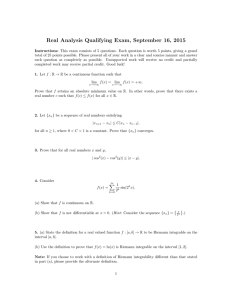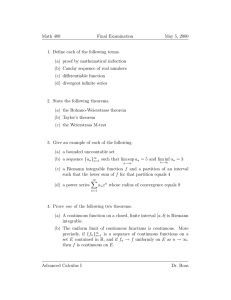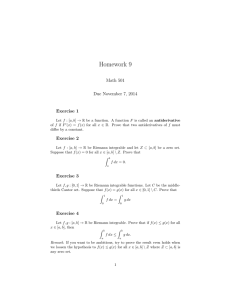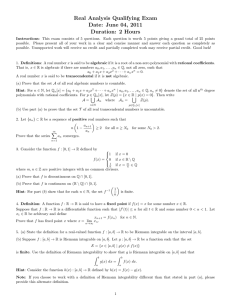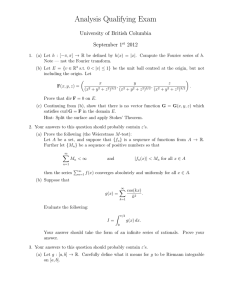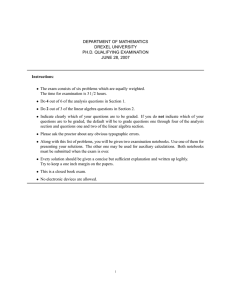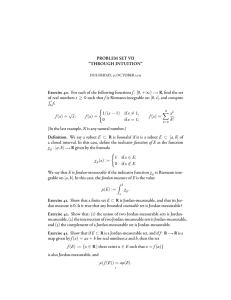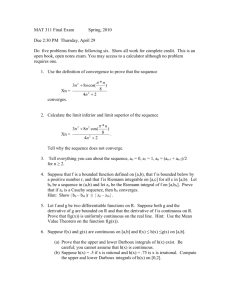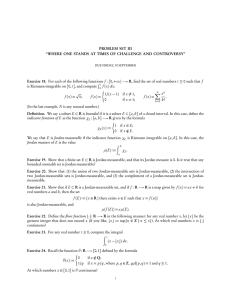Fall 2016, Math 409, Section 502 Eleventh Assignment
advertisement
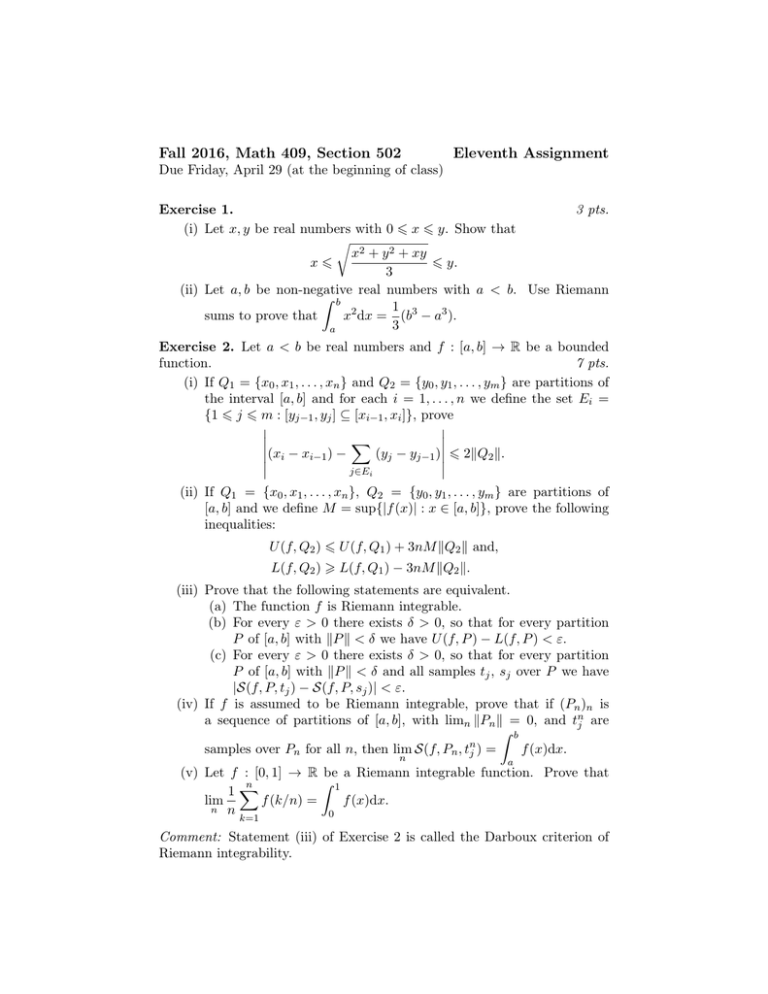
Fall 2016, Math 409, Section 502
Eleventh Assignment
Due Friday, April 29 (at the beginning of class)
Exercise 1.
3 pts.
(i) Let x, y be real numbers with 0 6 x 6 y. Show that
r
x2 + y 2 + xy
x6
6 y.
3
(ii) Let a, b be non-negative real numbers with a < b. Use Riemann
Z b
1
sums to prove that
x2 dx = (b3 − a3 ).
3
a
Exercise 2. Let a < b be real numbers and f : [a, b] → R be a bounded
function.
7 pts.
(i) If Q1 = {x0 , x1 , . . . , xn } and Q2 = {y0 , y1 , . . . , ym } are partitions of
the interval [a, b] and for each i = 1, . . . , n we define the set Ei =
{1 6 j 6 m : [yj−1 , yj ] ⊆ [xi−1 , xi ]}, prove
X
(xi − xi−1 ) −
6 2kQ2 k.
(y
−
y
)
j
j−1
j∈Ei
(ii) If Q1 = {x0 , x1 , . . . , xn }, Q2 = {y0 , y1 , . . . , ym } are partitions of
[a, b] and we define M = sup{|f (x)| : x ∈ [a, b]}, prove the following
inequalities:
U (f, Q2 ) 6 U (f, Q1 ) + 3nM kQ2 k and,
L(f, Q2 ) > L(f, Q1 ) − 3nM kQ2 k.
(iii) Prove that the following statements are equivalent.
(a) The function f is Riemann integrable.
(b) For every ε > 0 there exists δ > 0, so that for every partition
P of [a, b] with kP k < δ we have U (f, P ) − L(f, P ) < ε.
(c) For every ε > 0 there exists δ > 0, so that for every partition
P of [a, b] with kP k < δ and all samples tj , sj over P we have
|S(f, P, tj ) − S(f, P, sj )| < ε.
(iv) If f is assumed to be Riemann integrable, prove that if (Pn )n is
a sequence of partitions of [a, b], with limn kPn k = 0, and tnj are
Z b
n
samples over Pn for all n, then lim S(f, Pn , tj ) =
f (x)dx.
n
a
(v) Let f : [0, 1] → R be a Riemann integrable function. Prove that
Z 1
n
1X
lim
f (k/n) =
f (x)dx.
n n
0
k=1
Comment: Statement (iii) of Exercise 2 is called the Darboux criterion of
Riemann integrability.
